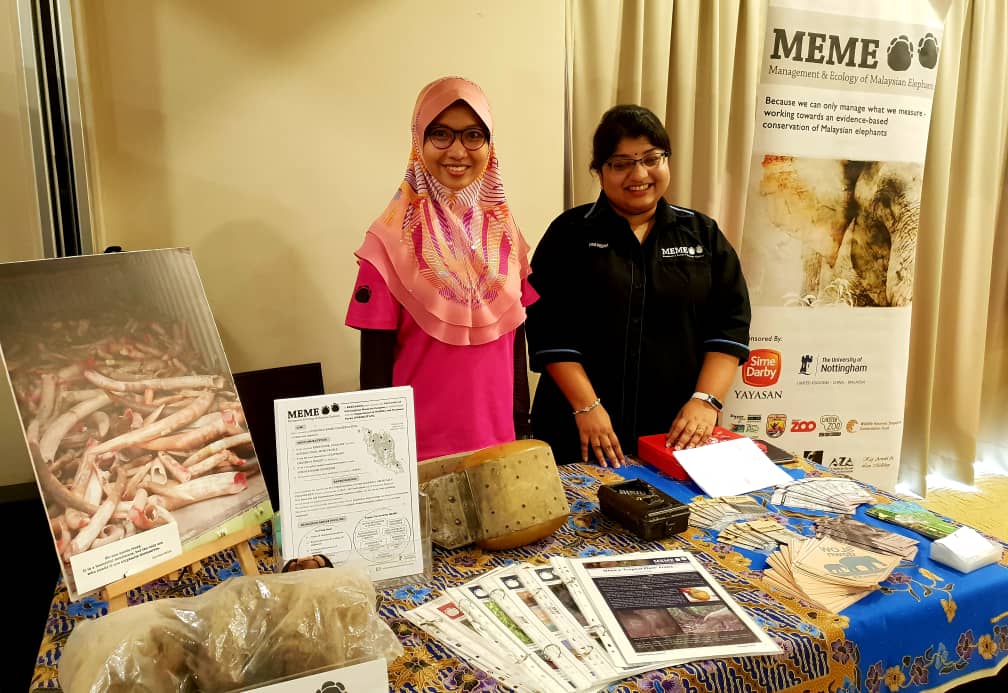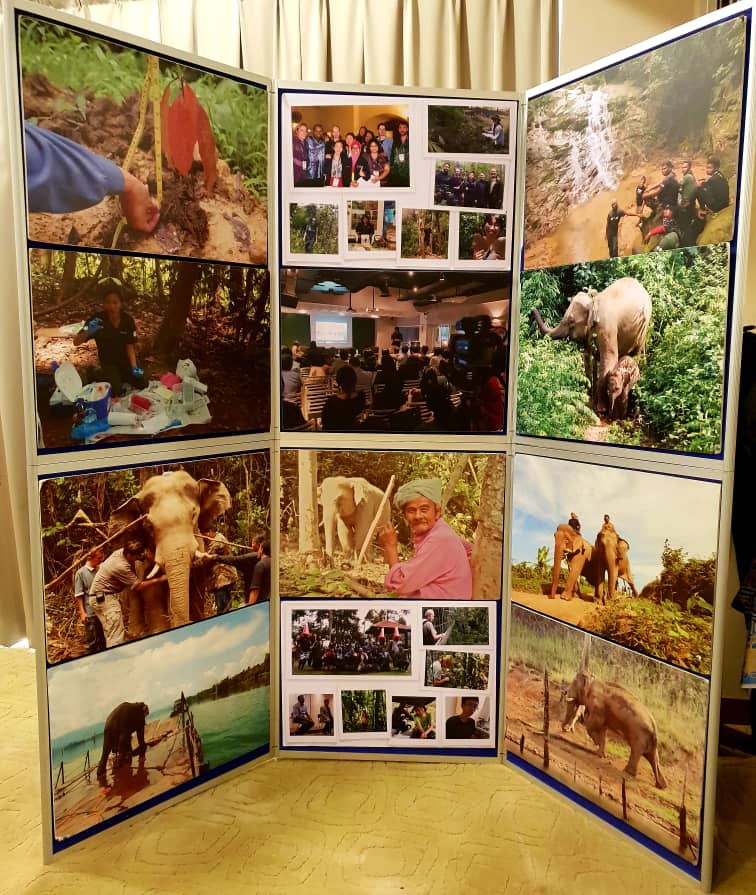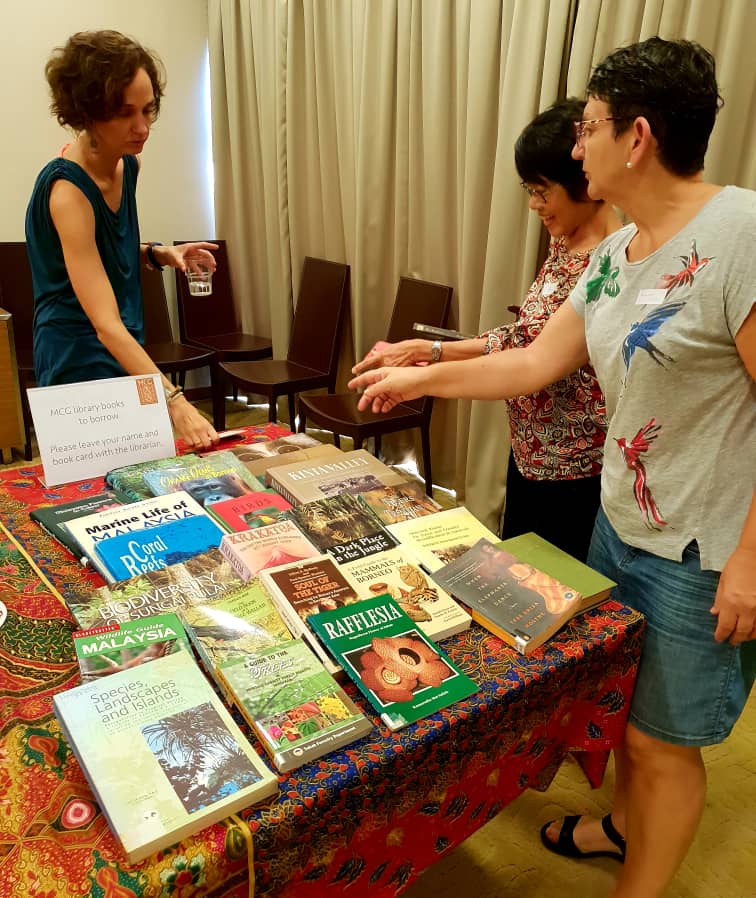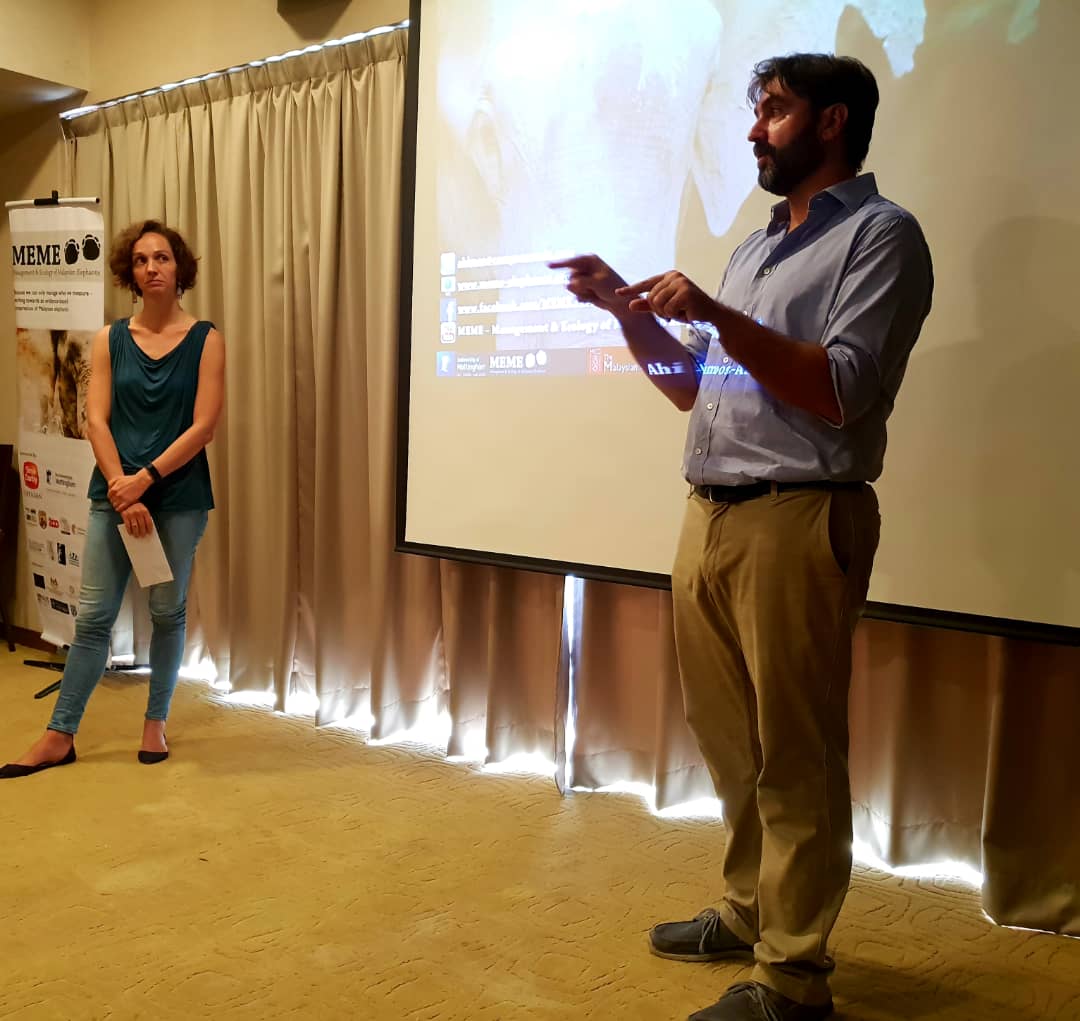|
MEME and the art of saving the Malaysian elephant |
|
|
Verdant Malaysia has swathes of rainforest terrain. These lush enclaves are home to a wide variety of exotic flora and fauna. However, over the years as the country has developed, it has expanded its infrastructure and built plantations for cultivating cash-rich crops. This intense economic activity has depleted much of the lush forest cover in many areas of the country as it has caused the jungle to retreat. In fact, the rate of deforestation in Malaysia is very high, and this is has had a devastating impact on the native wildlife population, in particular, the Malaysian elephant. This pachyderm is now considered to be a critically endangered species for their tribe is just around 1600 strong.
Ahimsa Campos-Arceiz, the lead investigator for MEME, a body involved in the management and the ecology of the Malaysian Elephant delighted the audience at MCG as he attempted to educate us on the precarious situation of the Malaysian elephant. Ahimsa, who is an associate professor at the Tropical Conservation Laboratory at the School of Geography at the University of Nottingham, Malaysia Campus, has been involved in various conservation projects in many countries and now concentrates his efforts on the Asian elephant in South and South-East Asia. |
|
 |
 |
|
Verdant Malaysia has swathes of rainforest terrain. These lush enclaves are home to a wide variety of exotic flora and fauna. However, over the years as the country has developed, it has expanded its infrastructure and built plantations for cultivating cash-rich crops. This intense economic activity has depleted much of the lush forest cover in many areas of the country as it has caused the jungle to retreat. In fact, the rate of deforestation in Malaysia is very high, and this is has had a devastating impact on the native wildlife population, in particular, the Malaysian elephant. This pachyderm is now considered to be a critically endangered species for their tribe is just around 1600 strong.
Ahimsa Campos-Arceiz, the lead investigator for MEME, a body involved in the management and the ecology of the Malaysian Elephant delighted the audience at MCG as he attempted to educate us on the precarious situation of the Malaysian elephant. Ahimsa, who is an associate professor at the Tropical Conservation Laboratory at the School of Geography at the University of Nottingham, Malaysia Campus, has been involved in various conservation projects in many countries and now concentrates his efforts on the Asian elephant in South and South-East Asia. |
|
 |
 |
|
As a part of their analysis, MEME also studies the eating habits of these gentle giants, and they learn how important these mega faunas are to the ecosystem. An elephant can put away tonnes of food in a day, and they especially enjoy eating bamboo, grasses, vines, and tropical fruits like mangoes and durians. They tend to ingest these fruits whole, and also similarly expel them. As a result, they serve as effective seed dispersers and majorly influence the ecosystem.
The conservation of Malaysian elephants is a serious topic, but Ahimsa with his highly engaging manner entertained the audience and indeed succeeded in making us aware of the grave plight of the Malaysian elephants. We now realise that if future generations of Malaysians need to be acquainted with the Malaysian elephant much work needs to be done now to ensure they survive and their numbers increase.
To learn more about the wonderful work that members of MEME are doing you can visit http://www.meme-elephants.org or follow MEME on their social media channels.
Angeeta Nayar
|
|




